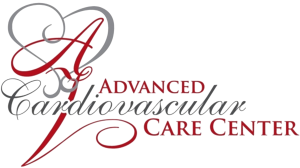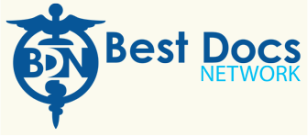Women and Heart Disease

A heart attack occurs when an artery that carries oxygen-rich blood to the muscle of the heart (myocardium) becomes blocked. The resulting lack of oxygen causes tissue to die in the part of the heart supplied by the blocked artery. A heart attack is also called a myocardial infarction (MI).
Causes
Most heart attacks are indirectly caused by coronary artery disease (CAD) or Atherosclerosis, a condition in which fatty deposits (plaque) build up on the walls of an artery. This narrows the arteries and restricts blood flow to the muscle of the heart. A heart attack is usually triggered by a tear or rupture of the plaque, which leads to the formation of a blood clot that blocks the blood flow in the artery. Spasm of the artery can also contribute to the blockage.
Risk Factors
The risk factors for having a heart attack are similar to those for developing CAD.
Uncontrollable risk factors include:
Early menopause
Postmenopausal status
Increasing age
African American, Mexican American, American Indian, native Hawaiian, or Asian ethnicity
Family history of cardiovascular disease (These are diseases that affect the heart and blood vessels.)
Risk factors that you can control through lifestyle or treatment include:
Smoking or exposure to secondhand smoke
High blood pressure
High levels of low-density lipoprotein (LDL) cholesterol
Low levels of high-density lipoprotein (HDL) cholesterol
Sedentary lifestyle
Diabetes
Obesity and overweight (especially when focused around the waist)
Psychological stress
Symptoms
The symptoms of a heart attack may be far more subtle in women than in men. Chest pain or discomfort is typically the most common symptom in men and women. However, women may be more likely to experience some of the other common symptoms, particularly shortness of breath, nausea or vomiting, and back or jaw pain.
Common symptoms include:
Nausea and vomiting
Severe fatigue
Dizziness, fainting
Feelings of heartburn or indigestion in the upper abdomen
Pain that radiates into the arms (on the left side more than the right)
Pain high in the back, jaw, or neck
Heart palpitations
Profuse sweating
Shortness of breath
A fear of impending death
Diagnosis
The following tests may be done to confirm the diagnosis of a heart attack:
Electrocardiogram (ECG)—This test records the electrical activity of the heart. It is used to see if the heart muscle was damaged and where the damage is located.
Blood tests—These may include checking levels of enzymes, troponin levels, and other tests.
Echocardiogram —This test uses high-frequency sound waves to visualize the heart’s structure and function.
Myocardial perfusion scan —This scan uses small doses of a radioactive substance injected into the bloodstream to visualize how well blood is nourishing the heart muscle.
Coronary angiogram —This is an invasive test where a catheter is placed into the large artery in the groin and then advanced up the aorta and to the heart. Intravenous (IV) contrast is injected into the arteries to visualize blockages.
Treatment
As with men, heart disease is the number one killer for women, too. Women account for nearly half the deaths from heart attack. This makes it especially important for women to recognize the symptoms and receive immediate care.
Medical attention within the first hour after the symptoms start can significantly reduce the amount of heart damage. An electric shock using a defibrillator along with intravenous medicine may be administered if the heartbeat is dangerously irregular. Supplemental oxygen is usually given to increase oxygen in the blood and minimize tissue damage.
Other treatments may include:
Medications
A number of drugs can reduce clotting and improve blood flow, thereby minimizing damage to the heart. These include:
Drugs that alleviate pain and dilate blood vessels around the heart, increasing blood flow (eg, nitroglycerin, morphine)
Anticlotting drugs (eg, aspirin, heparin, clopidogrel, platelet GP IIb/IIIa inhibitors)
Drugs that dissolve blood clots (eg, streptokinase, alteplase, reteplase, anistreplase, urokinase)
Drugs that slow heart rate and/or lower blood pressure (eg, beta-blockers, ACE inhibitors, calcium-channel blockers)
Cholesterol-lowering drugs (eg, statins)
Revascularization Procedures
In some cases, opening the blocked arteries may be required or recommended. The two most common of these procedures are:
Coronary angioplasty —A small balloon attached to a catheter is inserted into an artery in the groin and threaded to the site of blockage. The balloon is inflated and deflated to open the artery, and then it is removed. This makes more room in the artery for blood to flow through. A stent may also be placed to help keep the artery open.
Coronary artery bypass graft (CABG)—This is a surgical procedure used when multiple vessels are blocked, a PCI cannot be done, or there is a critical blockage of the left main coronary artery. This is done by using blood vessels from other parts of the body to make a new route for blood to flow around blocked arteries.
Prevention
To decrease your chance of developing CAD and thus having a heart attack, try to make these lifestyle changes:
If you smoke, quit. Talk to your doctor about smoking cessation programs. There are also nicotine replacement products to help you kick the habit.
Exercise regularly. Aim for 150 minutes of exercise each week (about 30 minutes on most days). The activity should be moderate intensity, like walking or swimming. Or, you could do 75 minutes per week of vigorous exercise (eg, running, participating in an exercise class). It is also recommended that you do strength training twice a week. Remember to talk to your doctor before staring a new exercise routine!
If you have recently experienced a cardiovascular event (eg, heart attack or stroke) or had heart surgery, be actively involved in the rehab program that was designed for you. The program will help you recover and may lower your risk of having another event.
Eat healthier! There are many steps that you can take to improve your diet, like eating more fruits and vegetables, as well as whole grains and high- fiber foods. Also, try to eat fish twice per week. What should you avoid? Try to stay away from foods that are high in trans fat, saturated fat, sodium, cholesterol, and sugar.
Maintain a healthy weight. If you are overweight, talk to your doctor about ways you can lose weight and keep it off. Two main strategies for reaching your goal include reducing the number of calories that you consume and exercising.
If you have high blood pressure, take steps to keep your blood pressure within normal levels. This may include losing weight, being more active, eating a low-sodium diet, drinking only in moderation (one drink per day for women), and taking blood pressure medicine.
If you have other conditions like high cholesterol or diabetes, get proper treatment. By making lifestyle changes and taking medicine you can take control of your health.
Take steps to reduce stress. Yoga and meditation are just two ways that you can learn how to relax.
Also, ask you doctor if you should take an aspirin every day.
RESOURCES: American Heart Association
http://www.americanheart.org
National Coalition for Women with Heart Disease



